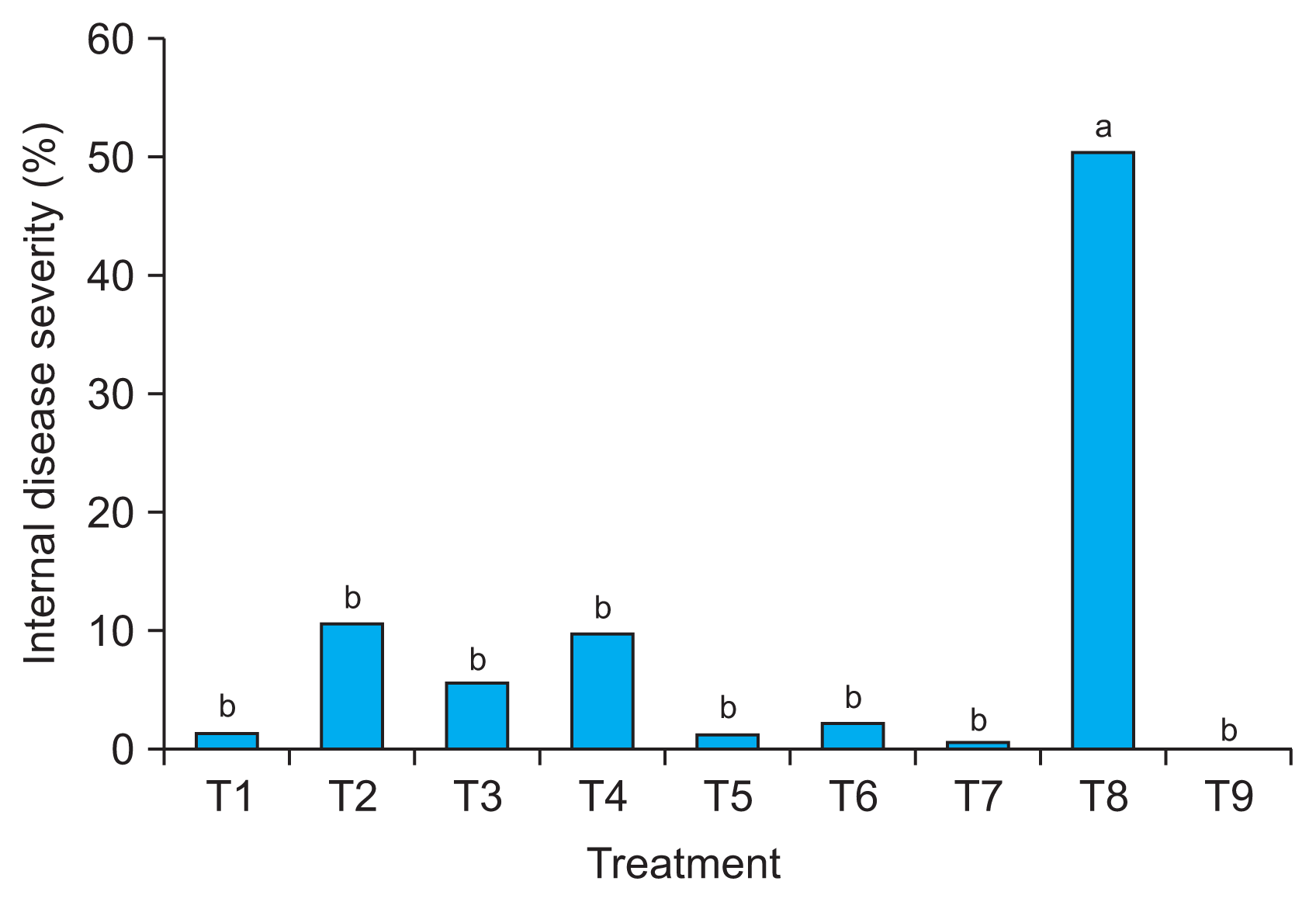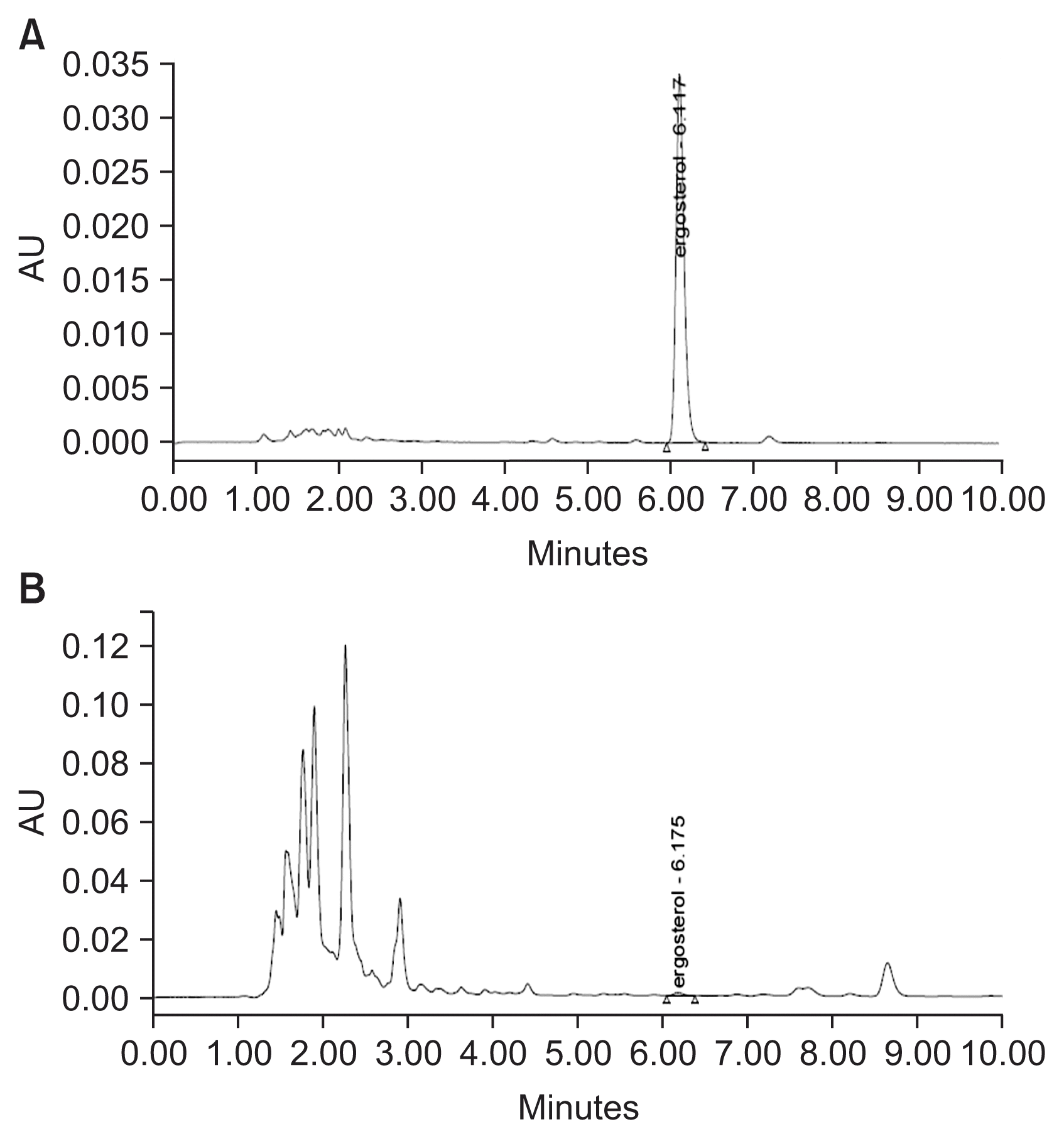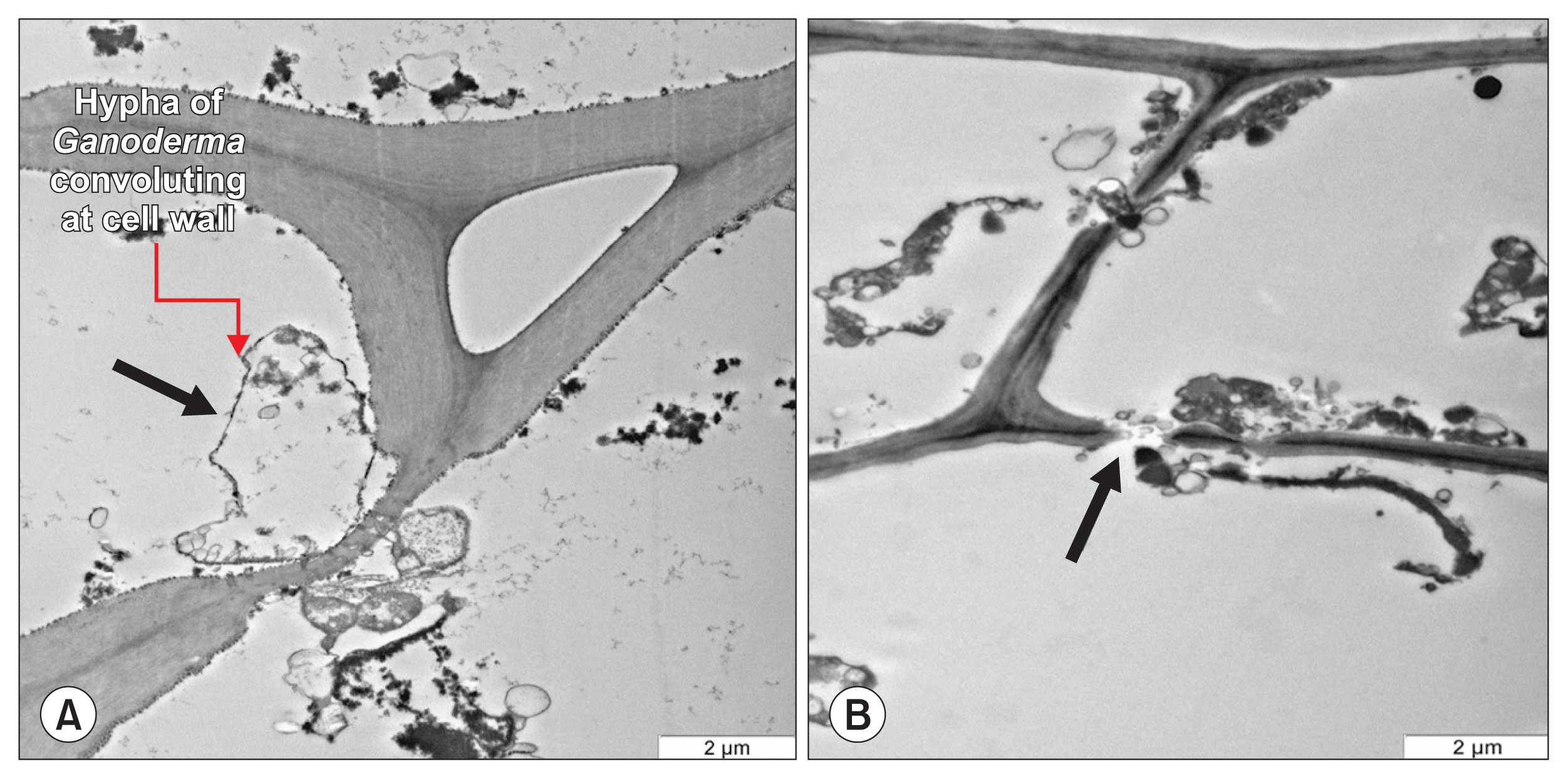Abdulllah, F, Ilias, GNM, Nelson, M, Nur Ain Izzati, MZ and Umi Kalsom, Y 2003. Disease assessment and the efficacy of Trichoderma as a biocontrol agent of basal stem rot of oil palm. Res Bull Sci Putra. 11:31-33.
Agrios, G 2005. Plant pathology. 5th ed. Elsevier-Academic Press, San Diego, CA, USA.
Breton, F, Hasan, Y, Hariadi Lubis, Z and de Franqueville, H 2005. Characterization of parameters for the development of an early screening test for basal stem rot tolerance in oil palm progenies. In: Proceedings of Agriculture, Biotechnology and Sustainability Conference: Technological breakthroughs and commercialization, the way forward; Lembaga Minyak Sawit Malaysia. 25-29 September 2005; Malaysian Palm Oil Board, Kuala Lumpur, Malaysia.
Campbell, CL and Madden, LV 1990. Introduction to plant disease epidemiology. John Wiley & Sons, New York, NY, USA.
Engelhard, AW 1989. Soil borne plant pathogens: management of diseases with macro- and microelements. APS Press, St. Paul, MN, USA.
Fukushima, K and Terashima, N 1991. Heterogeneity in formation of lignin. Part XV. Formation and structure of lignin in compression wood of Pinus thunbergii studied by micro-autoradiography. Wood Sci Technol. 25:371-381.
Gautam, S and Singh, PK 2009. Salicylic acid induced salinity tolerance in corn grown under NaCl stress.
Acta Physiol Plant. 31:1185-1190.


Gottwald, TR, Graham, TH, Irey, MS, McCollum, TG and Wood, BW 2012. Inconsequential effect of nutritional treatments on huanglongbing control, fruit quality, bacterial titter and disease progress. Crop Prot. 36:73-82.
Grabber, JH, Hatfield, RD and Ralph, J 1998. Diferulate cross-links impede the enzymatic degradation of non-lignified maize walls.
J Sci Food Agric. 77:193-200.

Ilias, GNM 2000. Trichoderma pers. ex fr. and its efficacy as a biological control agent of basal stem rot of oil palm (Elaeis guineensis jacq.). PhD thesis. Universiti Putra Malaysia, Selangor, Malaysia.
Liew, YA, Syed Omar, SR, Husni, MHA, Zainal Abidin, MA and Abdullah, NAP 2010. Effects of micronutrient fertilizers on the production of MR 219 rice (Oryza sativa L.). Malays J Soil Sci. 14:71-82.
Marscher, H 1995. Mineral nutrition of higher plants. 2nd ed. Academic Press, San Diego, CA, USA. 889.
Mazza, CA, Boccalandro, HE, Giordano, CV, Battista, D, Scopel, AL and Ballaré, CL 2000. Functional significance and induction by solar radiation of ultraviolet-absorbing sunscreens in field-grown soybean crops.
Plant Physiol. 122:117-126.




Muniroh, MS, Sariah, M, Zainal Abidin, MA, Lima, N and Paterson, RR 2014. Rapid detection of Ganoderma-infected oil palms by microwave ergosterol extraction with HPLC and TLC.
J Microbiol Methods. 100:143-147.


Nicholson, RL and Hammerschmidt, R 1992. Phenolic compounds and their role in disease resistance.
Annu Rev Phytopathol. 30:369-389.

Nie, X 2006. Salicylic acid suppresses Potato virus Y isolate N: O-induced symptoms in tobacco plants.
Phytopathology. 96:255-263.


Nur Sabrina, AA 2011. Effects of calcium and copper on lignin biosynthesis and suppression of Ganoderma bonensis infection in oil palm seedlings. MSc thesis. Universiti Putra Malaysia, Selangor, Malaysia.
Nur Sabrina, AA, Sariah, M and Zaharah, AR 2012. Suppression of basal stem rot disease progress on oil palm (Elaeis guineensis) after copper and calcium supplementation. Pertanika J Trop Agric Sci. 35:13-24.
Panhwar, QA, Naher, UA, Radziah, O, Shamshuddin, J, Mohd Razi, I, Dipti, SS and Karabalei Aghamolki, MT 2015. Quality and antioxidant activity of rice grown on alluvial soil amended. South Afr J Bot. 98:77-83.
Pieterse, CM, Leon-Reyes, A, Van der Ent, S and Van Wees, SC 2009. Networking by small-molecule hormones in plant immunity.
Nat Chem Biol. 5:308-316.



Pustika, AB, Subandiyah, S, Holford, P, Beattie, GAC, Iwanami, T and Masaoka, Y 2011. Interactions between plant nutrition and symptom expression in mandarin trees infected with the disease huanglongbing.
Austral Plant Dis Notes. 3:112-115.

Rahamah Bivi, M, Siti, Noor, Farhana, MD, Khairulmazmi, A, Idris, A, Ahmed, OH, Zamri, R and Sariah, M 2012. In vitro effects of salicylic acid, calcium and copper ions on growth and sporulation of Ganoderma boninense. Afr J Biotechnol. 11:13477-13489.
Rahamah Bivi, M, Siti, Noor, Farhana, MD, Khairulmazmi, A, Idris, AS, Susilawati, K and Sariah, M 2014. Assessment of plant secondary metabolites in oil palm seedlings after being treated with calcium, copper ions and salicylic acid.
Arch Phytopathol Plant Protect. 47:1120-1135.

Rahimizadeh, M, Habibi, D, Madani, H, Mohammadi, GN, Mehraban, A and Sabet, AM 2007. The effect of micronutrients on antioxidant enzymes metabolism in sunflower (Helianthus annus L.) under drought stress.
Helia. 30:167-174.

Raskin, J 1992. Role of salicylic acid in plants.
Ann Rev Plant Physiol Plant Mol Biol. 43:439-463.

Razi, MF, Khan, IA and Jaskani, MJ 2011. Citrus plant nutritional profile in relation to huanglongbing prevalence in Pakistan. Pak J Agric Sci. 48:299-304.
Rees, RW, Flood, J, Hasan, Y and Cooper, RM 2007. Effects of inoculum potential, shading and soil temperature on root infection of oil palm seedlings by the basal stem rot pathogen Ganoderma boninense.
Plant Pathol. 56:862-870.

Sariah, M and Zakaria, H 2000. The use of soil amendments for the control of basal stem rot of oil-palm seedlings. In:
Ganoderma diseases of perennial crops, eds. by J Flood, PD Bridge and M Holderness, 89-99. CABI Publishing, Wallingford, UK.

Sariah, M, Zakaria, H, Hendry, J, Shanji, GT and Chung, GF 1998. The potential use of soil amendments for the suppression of basal stem rots of oil palm seedlings. In: Second Workshop on Ganoderma Diseases of Perennial Crops; 5-8 October, 1998; Selangor, Malaysia. CABI Publishing, Wallingford, UK.
Stahl, PD and Parkin, TB 1996. Relationship of soil ergosterol concentration and fungal biomass.
Soil Biol Biochem. 28:847-855.

Susanto, A, Sudharto, PS and Purba, RY 2005. Enhancing biological control of basal stem rot disease (Ganoderma boninense) in oil palm plantations.
Mycopathologia. 159:153-157.



Tan, Y, Yu, D, Pletting, J and Davis, RL 2010. Gilgamesh is required for rutabaga-independent olfactory learning in Drosophila.
Neuron. 67:810-820.



Tian, S, Lu, L, Labavitch, JM, Webb, SM, Yang, X, Brown, PH and He, Z 2014. Spatial imaging of Zn and other elements in Huanglongbing-affected grapefruit by synchrotronbased micro X-ray fluorescence investigation.
J Exp Bot. 65:953-964.



Vance, CP, Kink, TK and Sherwood, RT 1980. Lignification as a mechanism of disease resistance.
Annu Rev Phytopathol. 18:259-288.

Vlot, AC, Dempsey, DA and Klessig, DF 2009. Salicylic acid, a multifaceted hormone to combat disease.
Annu Rev Phytopathol. 47:177-206.


Webb, SM 2006. SMAK: Sam’s microprobe analysis kit, V0.46. Stanford Synchrotron Radiation Laboratory, Stanford, CA, USA.
Zayed, EME, Abdelaziz, M and Elmalky, M 2011. Enhanced (G′/G)-expansion method and applications to the (2+1) D typical Breaking soliton and Burgers equations. J Adv Math Stud. 4:109-122.
Zeyen, RJ, Carver, TLW and Lyngkjaer, MF 2002. Epidermal cell papillae. In: The powdery mildews: a comprehensive treatise, eds. by RR Belanger, WR Bushnell, AJ Dik and TLW Carver, 107-125. APS Press, St. Paul, MN, USA.








 PDF Links
PDF Links PubReader
PubReader Full text via DOI
Full text via DOI Full text via PMC
Full text via PMC Download Citation
Download Citation Print
Print






